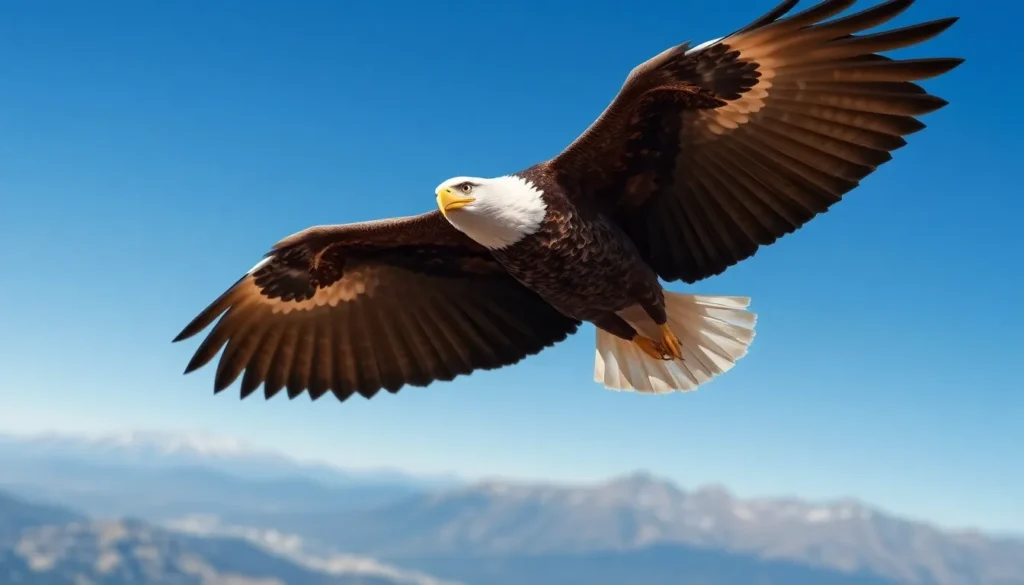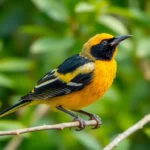When we think about nature’s most skilled hunters, birds of prey immediately capture our imagination. These magnificent aerial predators dominate skies worldwide with their razor-sharp talons, incredible eyesight, and powerful wings that can carry them at breathtaking speeds.
We’re fascinated by these raptors because they represent the perfect fusion of beauty and lethal efficiency. From the majestic bald eagle soaring over American landscapes to the silent barn owl hunting in moonlit fields, each species has evolved specialized hunting techniques that make them apex predators in their environments.
Whether you’re a wildlife enthusiast, birdwatcher, or simply curious about nature’s most impressive hunters, understanding birds of prey opens up a industry of incredible adaptations and behaviors. We’ll explore what makes these creatures so successful, how they’ve shaped ecosystems for millions of years, and why they continue to captivate us today.
What Is a Bird of Prey?
Birds of prey are carnivorous birds that hunt and kill other animals for food using specialized physical adaptations and hunting techniques. We classify these apex predators as raptors due to their exceptional ability to capture prey with remarkable precision and efficiency.
Physical Characteristics and Adaptations
Raptors possess distinctive physical features that set them apart from other bird species. Their sharp curved beaks tear flesh efficiently and crush bones of captured prey. Most birds of prey display keen eyesight that’s 4-8 times sharper than human vision, allowing them to spot small mammals from distances exceeding 2 miles.
Powerful talons serve as their primary hunting weapons, with grip strength reaching 500 pounds per square inch in larger species like golden eagles. Wing structures vary significantly among different raptor families – broad wings help species like red tailed hawks soar on thermals while narrow pointed wings give falcons incredible speed during dives.
Feather adaptations contribute to silent flight in many species, particularly owls whose specialized wing feathers eliminate sound during hunting. We observe sexual dimorphism in most raptor species, with females typically 25-50% larger than males to optimize hunting strategies and nesting responsibilities.
Hunting Behaviors and Techniques
Different raptor species employ distinct hunting strategies based on their physical adaptations and prey preferences. Soaring hunters like buzzards and eagles circle high above open terrain, using thermal currents to conserve energy while scanning for ground prey. These birds can maintain flight for hours without flapping their wings.
Ambush predators such as accipiter hawks use dense vegetation as cover, launching surprise attacks on unsuspecting songbirds and small mammals. Their short rounded wings provide exceptional maneuverability through forest environments. Pursuit hunters like peregrine falcons rely on speed and aerial acrobatics, reaching diving speeds of 240 mph when attacking prey mid flight.
Active hunting occurs when raptors like northern goshawks pursue prey through complex terrain, using their agility to navigate between trees and obstacles. Ground hunting specialists including secretary birds and some owl species walk or run to capture insects, reptiles, and small mammals directly from the earth’s surface.
Types of Birds of Prey
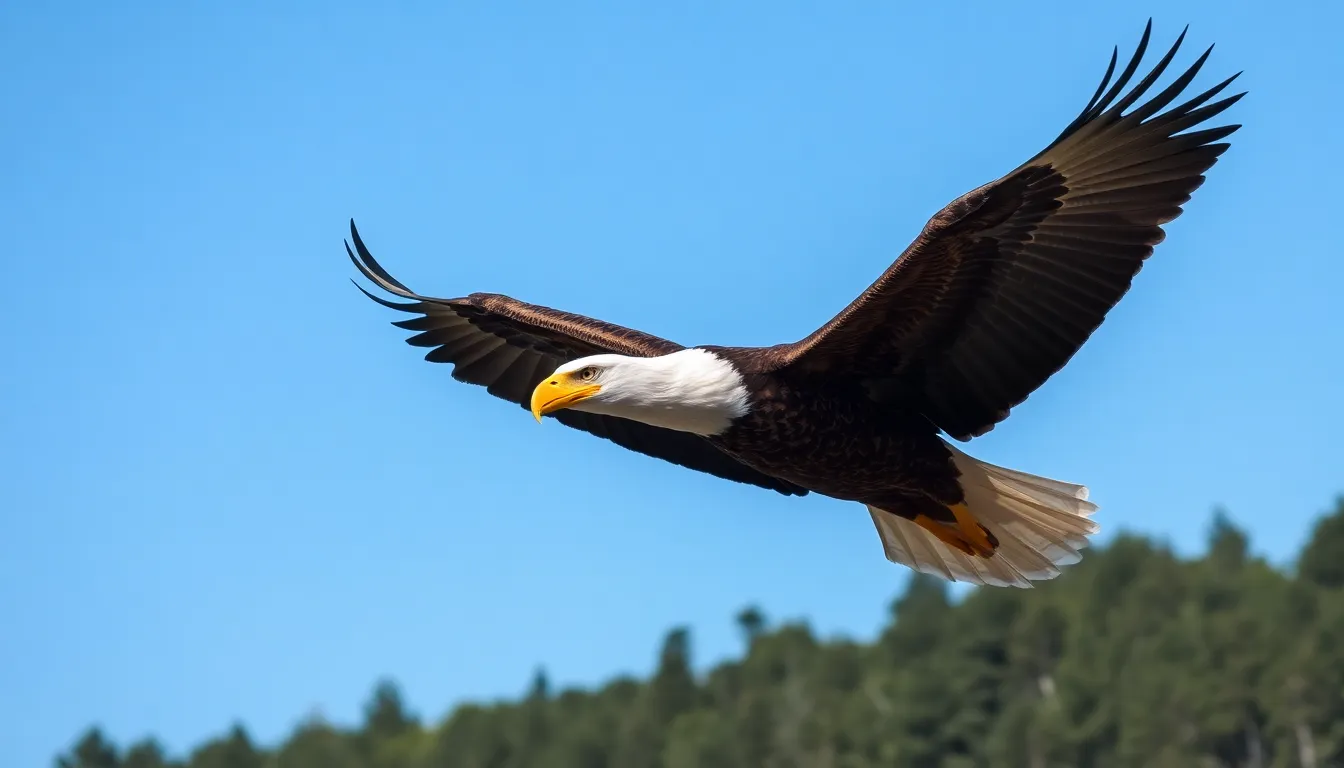
Birds of prey fall into two primary categories based on their hunting schedules and evolutionary adaptations. Diurnal species dominate daylight hours while nocturnal hunters reign supreme during darkness.
Diurnal Raptors
Diurnal raptors hunt exclusively during daylight hours when their exceptional vision provides maximum advantage. Eagles represent the most recognizable group with their powerful builds and soaring capabilities that allow them to spot prey from distances exceeding 2 miles. Bald eagles and golden eagles exemplify this category with wingspans reaching 7.5 feet and diving speeds of 100 mph.
Hawks comprise three distinct subfamilies within diurnal raptors. Accipiters like Cooper’s hawks and sharp-shinned hawks specialize in woodland hunting with short rounded wings and long tails for rapid maneuvering through dense vegetation. Buteos such as red-tailed hawks and rough-legged hawks feature broad wings designed for effortless soaring over open terrain. Falcons including peregrine falcons and American kestrels possess pointed wings that enable high-speed pursuit hunting with recorded diving speeds reaching 240 mph.
Harriers represent ground-hunting specialists that cruise low over marshlands and grasslands using their distinctive owl-like facial discs to locate prey through sound. Northern harriers exhibit pronounced sexual dimorphism with females measuring 20% larger than males and displaying different plumage patterns for improved hunting efficiency.
Vultures serve as nature’s cleanup crew within the diurnal category. Turkey vultures and black vultures use their exceptional soaring abilities to cover vast territories while searching for carrion using both sight and smell detection methods.
Nocturnal Raptors
Nocturnal raptors dominate nighttime hunting through specialized adaptations that maximize their effectiveness in low-light conditions. Owls represent the primary nocturnal group with over 200 species worldwide displaying unique characteristics absent in diurnal species.
Silent flight capabilities distinguish owls from all other raptors through specialized feather structures. Fringed flight feathers and soft down create virtually soundless wing beats that prevent prey detection during approach sequences. Barn owls and great horned owls demonstrate this adaptation with flight noise levels measuring below 0.3 decibels.
Exceptional hearing systems provide owls with three-dimensional sound mapping abilities. Asymmetrical ear openings positioned at different skull heights create precise triangulation capabilities that pinpoint prey locations within 1-degree accuracy even in complete darkness. Great gray owls can detect voles moving beneath 18 inches of snow using hearing alone.
Facial disc structures function as satellite dishes that collect and focus sound waves toward sensitive ear openings. These concentric feather arrangements can be adjusted voluntarily to enhance directional hearing and improve prey detection ranges up to 75 yards in optimal conditions.
Large forward-facing eyes maximize light gathering potential through pupils that dilate to extraordinary proportions. Owl eyes contain rod-to-cone ratios 100 times greater than human eyes and feature reflective tapetum lucidum layers that essentially double available light input for enhanced night vision capabilities.
Habitat and Distribution

Birds of prey occupy nearly every habitat on Earth, from arctic tundra to tropical rainforests. These adaptable raptors have evolved to thrive in diverse environments across all continents except Antarctica.
Global Range and Migration Patterns
Raptors demonstrate remarkable global distribution patterns spanning six continents. Peregrine falcons hold the record as the most widespread raptor species, inhabiting every continent except Antarctica and found in over 100 countries. Red-tailed hawks dominate North American landscapes from Alaska to Panama, while Eurasian buzzards cover territories from western Europe through central Asia.
Migration routes reveal fascinating behavioral adaptations among different raptor species. Turkey vultures travel distances exceeding 6,000 miles during annual migrations, using thermal currents to conserve energy during long-distance flights. Broad-winged hawks create spectacular migration events called “kettles” where thousands of birds spiral together in thermal columns, particularly visible along the Appalachian Mountains during September migrations.
Arctic-breeding species like rough-legged buzzards undertake seasonal migrations covering distances up to 4,000 miles between breeding and wintering grounds. Swainson’s hawks complete one of the longest raptor migrations, traveling approximately 14,000 miles roundtrip between North American breeding areas and South American wintering territories in Argentina.
Some raptor populations remain sedentary year-round while others display partial migration patterns. Bald eagles in Alaska migrate south during winter months, yet Florida populations remain resident throughout the year. Weather patterns and food availability drive these migration decisions more than genetic programming.
Preferred Environments and Nesting Sites
Forest environments support the highest diversity of raptor species globally. Closed-canopy forests provide ideal hunting grounds for accipiters like Cooper’s hawks and sharp-shinned hawks, which navigate dense vegetation with remarkable agility. Great horned owls prefer mature forests with large trees offering suitable nesting cavities and abundant prey populations.
Open grasslands and prairies attract different raptor assemblages specialized for hunting in exposed terrain. Ferruginous hawks dominate western North American prairies, constructing massive stick nests on isolated trees or rocky outcrops. Northern harriers cruise low over marshlands and grasslands, using their exceptional hearing to locate prey hidden in vegetation.
Coastal and wetland habitats support specialized raptor communities adapted for aquatic hunting. Osprey populations concentrate along coastlines, rivers, and large lakes where fish populations remain abundant year-round. Bald eagles require proximity to water bodies for their primary fish diet, typically nesting within one mile of shorelines.
Mountain and cliff environments provide nesting opportunities for several raptor species requiring inaccessible ledges for protection. Peregrine falcons select cliff faces and tall buildings in urban areas, with nest sites averaging 165 feet above ground level. Golden eagles prefer mountainous terrain with elevations ranging from 3,000 to 10,000 feet, constructing nests on cliff ledges with commanding views of hunting territories.
Desert ecosystems support specialized raptor communities adapted to arid conditions and sparse prey populations. Harris’s hawks thrive in Sonoran Desert environments, demonstrating unique cooperative hunting behaviors among family groups. Burrowing owls occupy grassland and desert habitats, nesting in underground burrows rather than traditional tree cavities used by forest owl species.
Human-modified landscapes increasingly provide habitat for adaptable raptor species. Red-shouldered hawks successfully exploit suburban woodlots and parks, while American kestrels use nest boxes installed along highways and agricultural areas.
Diet and Feeding Habits
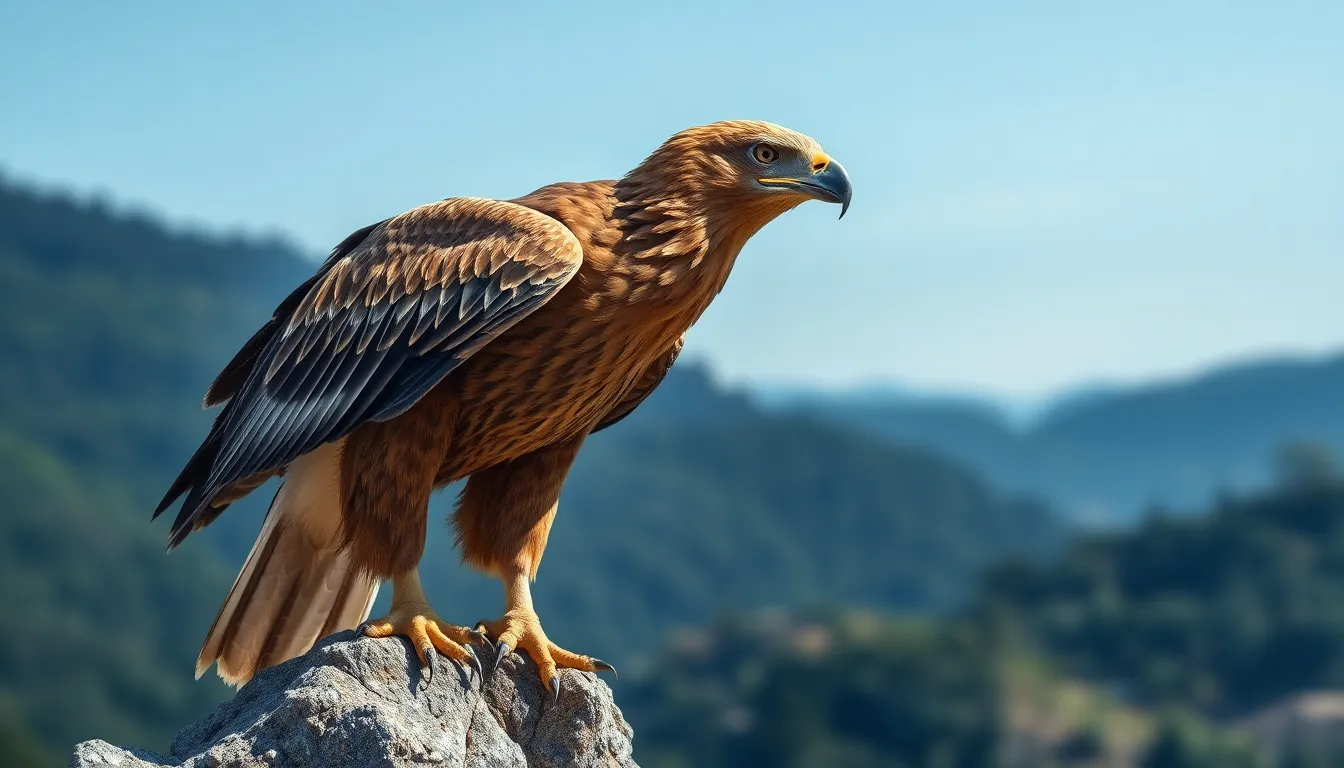
Birds of prey exhibit remarkable dietary diversity and specialized feeding strategies that reflect millions of years of evolutionary adaptation. We observe these carnivorous hunters employing sophisticated techniques to capture and consume their varied prey across different ecosystems.
Prey Selection and Hunting Success
Prey selection among raptors depends heavily on body size, habitat preferences, and specialized hunting adaptations. Large eagles like golden eagles target mammals ranging from rabbits to young deer, while smaller kestrels focus on insects, small rodents, and reptiles. Peregrine falcons specialize in aerial hunting of medium-sized birds, achieving success rates of 47% during stooping attacks on pigeons and doves.
Hunting success varies significantly across species and environmental conditions. Goshawks demonstrate 38% success rates when hunting in dense forests, using their short wings and long tails for maneuverability between trees. Secretary birds achieve 60% success rates when hunting snakes and small mammals on African savannas, combining their terrestrial hunting style with powerful leg strikes.
Environmental factors directly influence prey availability and hunting effectiveness. Cooper’s hawks show higher success rates of 42% during winter months when deciduous trees lose their leaves, providing clearer sight lines to prey. Rough-legged buzzards experience seasonal fluctuations in hunting success based on vole population cycles, with success rates dropping from 65% to 23% during prey population crashes.
Feeding Adaptations Across Species
Beak morphology reveals distinct feeding specializations among different raptor groups. Fish-eating raptors like ospreys possess reversible outer toes and spicules on their toe pads for gripping slippery prey. Vultures feature bare heads and necks that prevent bacterial buildup when feeding on carrion, while their powerful beaks tear through tough hide and muscle tissue.
Digestive adaptations enable raptors to process diverse food sources efficiently. Owls produce pellets containing indigestible bones, fur, and feathers approximately 10-16 hours after feeding, allowing researchers to analyze their diet composition. Scavenging vultures possess highly acidic stomach contents with pH levels around 1.0, enabling them to neutralize harmful bacteria from decomposing carcasses.
Feeding behaviors demonstrate remarkable flexibility across hunting scenarios. Bald eagles exhibit both active hunting and opportunistic scavenging, with fish comprising 56% of their diet supplemented by waterfowl, small mammals, and carrion. Harris’s hawks employ cooperative hunting strategies, with family groups coordinating attacks that increase individual success rates from 15% to 85% when targeting larger prey like rabbits and ground squirrels.
Metabolic requirements drive daily feeding patterns among different sized raptors. Small falcons like American kestrels consume 8-12% of their body weight daily, requiring frequent hunting sessions throughout daylight hours. Large eagles consume 3-5% of their body weight daily but can survive several days without feeding due to their efficient energy storage capabilities.
Conservation Status and Threats
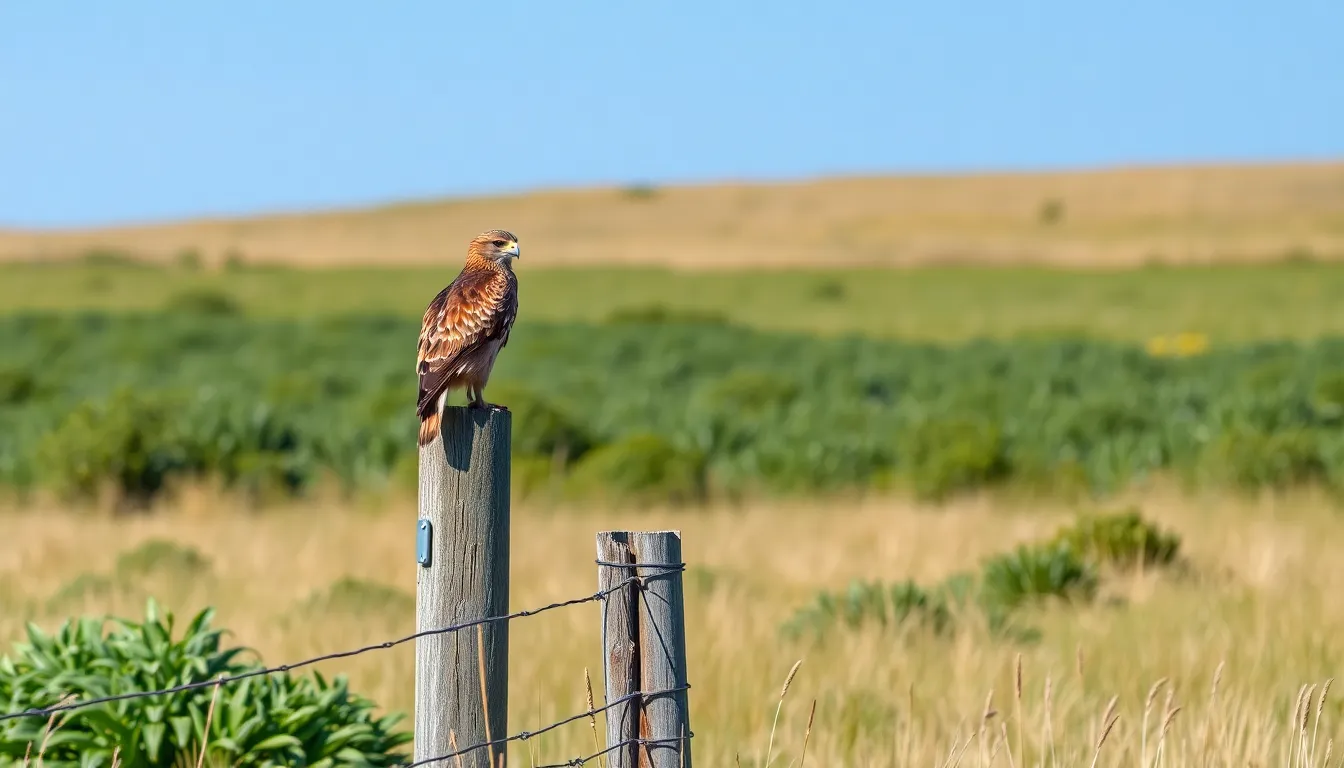
Raptor populations face unprecedented challenges across global ecosystems as human activities intensify and environmental conditions shift. We observe declining numbers among many bird of prey species due to multiple interconnected threats that compromise their survival and reproductive success.
Human Impact and Habitat Loss
Urban expansion destroys critical nesting territories that raptors depend on for breeding success. We document habitat fragmentation as the primary driver of population declines among forest dwelling species like northern goshawks and Cooper’s hawks. Agricultural intensification eliminates the diverse prey communities that support healthy raptor populations, particularly affecting grassland specialists such as ferruginous hawks and burrowing owls.
Infrastructure development creates lethal obstacles for migrating raptors, with wind turbines causing approximately 234,000 bird deaths annually in the United States alone. Power lines electrocute thousands of eagles and hawks each year, while collision rates increase near communication towers and tall buildings. Vehicle strikes impact ground hunting species like American kestrels and rough legged buzzards that hunt along roadways.
Pesticide contamination continues affecting raptor reproduction through eggshell thinning and neurological damage. DDT banned decades ago still persists in some ecosystems, while newer compounds like rodenticides accumulate in tissues of owls and hawks that consume poisoned prey. We track bioaccumulation patterns showing higher toxin concentrations in apex predators compared to their prey species.
Human disturbance during breeding seasons causes nest abandonment among sensitive species like golden eagles and peregrine falcons. Recreation activities near cliff faces and forest edges interrupt courtship behaviors and chick rearing processes. Illegal persecution through shooting and trapping remains problematic in regions where raptors conflict with livestock interests or game bird protection efforts.
Climate Change Effects
Temperature increases alter prey distribution patterns that determine raptor foraging success and territory selection. We observe northward range shifts among species like rough legged buzzards and snowy owls as their Arctic breeding grounds warm beyond optimal conditions. Southern populations of red tailed hawks and Cooper’s hawks expand into previously unsuitable northern territories.
Precipitation changes affect small mammal cycles that support raptor populations, particularly impacting owls and kestrels dependent on predictable prey abundance. Drought conditions reduce ground squirrel and vole populations across western North America, forcing raptors to expand hunting territories or abandon traditional ranges entirely.
Extreme weather events increase during migration periods, creating deadly conditions for traveling raptors. Severe storms disorient birds using magnetic navigation while unseasonable temperature fluctuations disrupt timing between raptor arrivals and peak prey availability. We document increased mortality rates among broad winged hawks and Swainson’s hawks during abnormal weather patterns.
Sea level rise threatens coastal nesting sites used by osprey and bald eagles, forcing these species to compete for limited inland alternatives. Ocean temperature changes affect fish distribution that supports marine raptor populations, particularly impacting specialized fish eating species along coastlines.
Phenological mismatches develop when raptor breeding cycles no longer align with prey emergence patterns. Spring temperatures advance insect hatching dates faster than raptor egg laying schedules, reducing food availability during critical chick rearing periods. We measure declining reproductive success among multiple species experiencing these temporal disconnects.
Birds of Prey in Culture and Wildlife Management
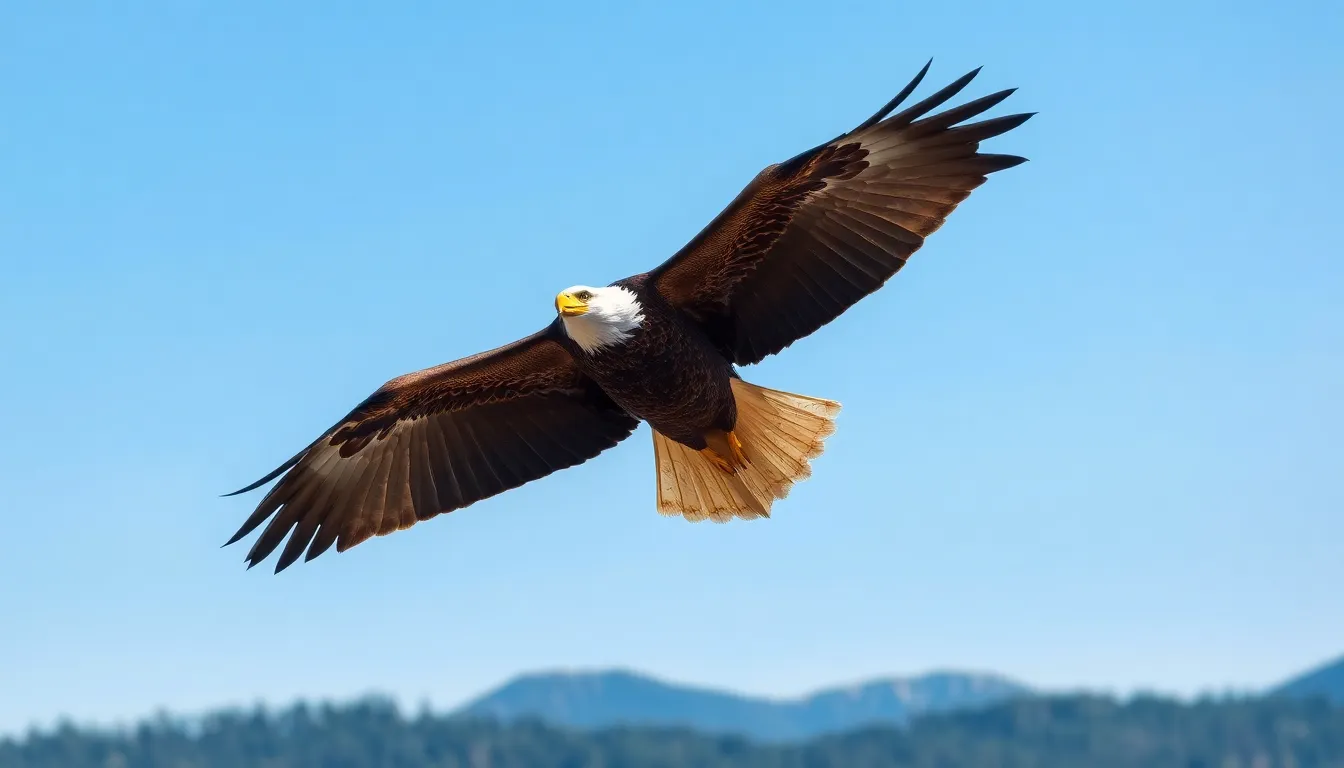
Birds of prey represent powerful symbols across human cultures while serving critical ecological functions that maintain environmental balance. These magnificent raptors influence both our cultural heritage and modern conservation strategies.
Cultural Significance and Symbolism
Eagles dominate national emblems and cultural narratives across 23 countries, with the bald eagle serving as America’s national bird since 1782. Ancient civilizations revered these apex predators as divine messengers, with Egyptian mythology featuring the falcon headed god Horus and Greek traditions associating eagles with Zeus.
Native American cultures incorporate raptor symbolism into spiritual practices, viewing hawks as messengers between earthly and spiritual realms. The thunderbird legend spans many tribes, representing power and protection through stylized eagle imagery.
Medieval falconry elevated birds of prey to aristocratic status, with peregrine falcons reserved for royalty and goshawks designated for nobility. This practice shaped European culture for over 1,000 years, establishing raptors as symbols of prestige and skill.
Modern literature and media continue celebrating these predators, from Tolkien’s great eagles to contemporary wildlife documentaries. Sports teams adopt raptor names in 47% of bird-themed professional franchises, demonstrating their enduring appeal as symbols of strength and precision.
Role in Network Balance
Raptors control rodent populations with remarkable efficiency, with a single barn owl family consuming approximately 3,000 rodents annually. These natural pest control services provide economic benefits worth $390 per owl pair in agricultural regions, reducing crop damage and disease transmission.
Scavenger species like vultures prevent disease outbreaks by consuming carrion within 24 hours of discovery. Turkey vultures process 88% of available carcasses in their territories, eliminating bacterial contamination that could affect livestock and water sources.
Top predator raptors regulate prey species populations through selective hunting pressure, maintaining biodiversity in forest ecosystems. Goshawks target weak or diseased animals in 73% of documented hunts, strengthening prey gene pools and reducing disease spread.
Seed dispersal occurs when fruit eating raptors like caracaras transport seeds across vast distances, contributing to forest regeneration patterns. Migration routes of these species create ecological corridors that connect fragmented habitats across continents.
Marine ecosystems benefit from fish eating raptors that concentrate nutrients from aquatic environments to terrestrial nesting sites. Osprey pairs transfer approximately 440 pounds of marine derived nutrients annually to surrounding forest communities through their feeding activities.
Conclusion
Birds of prey continue to captivate us with their remarkable adaptability and resilience. These apex predators have survived for millions of years by evolving sophisticated hunting strategies that allow them to thrive in diverse environments worldwide.
We’ve seen how their conservation depends on our understanding and protection of their habitats. By supporting conservation efforts and maintaining awareness of the threats they face we can ensure these magnificent raptors continue to soar through our skies.
Their cultural significance reminds us that raptors aren’t just ecological powerhouses—they’re symbols of freedom strength and natural beauty that inspire us to protect the wild spaces they call home.
Frequently Asked Questions
What are birds of prey?
Birds of prey, also known as raptors, are carnivorous birds that hunt and kill other animals for food. They possess specialized adaptations including sharp curved beaks, exceptional eyesight, powerful talons, and varied wing structures that enhance their hunting abilities. These apex predators have evolved over millions of years to become highly efficient hunters in diverse ecosystems worldwide.
What are the main types of birds of prey?
Birds of prey are categorized into two primary groups: diurnal and nocturnal raptors. Diurnal raptors hunt during the day and include eagles, hawks, falcons, and vultures. Nocturnal raptors are primarily owls that hunt at night, featuring silent flight, exceptional hearing, and large eyes for enhanced night vision.
How do different birds of prey hunt?
Raptors employ various hunting strategies based on their adaptations. Soaring hunters like eagles use thermals to scan for prey, ambush predators like accipiter hawks surprise victims in dense cover, pursuit hunters like peregrine falcons chase prey at high speeds, and ground specialists like secretary birds hunt terrestrial prey on foot.
Where do birds of prey live?
Birds of prey inhabit nearly every environment on Earth, from arctic tundra to tropical rainforests. They occupy diverse habitats including forests, grasslands, wetlands, deserts, mountains, and coastal areas. Some species like peregrine falcons have global distribution, while others are adapted to specific regional environments and demonstrate remarkable migration patterns.
What do birds of prey eat?
Raptors have diverse diets influenced by their body size, habitat, and hunting adaptations. Small raptors typically eat insects and small mammals, while larger species hunt bigger prey including fish, birds, and medium-sized mammals. Some species like vultures are scavengers, while others like fish eagles specialize in aquatic prey.
Are birds of prey endangered?
Many raptor species face conservation challenges due to human activities. Major threats include habitat loss from urban expansion and agriculture, infrastructure dangers like wind turbines and power lines, pesticide contamination affecting reproduction, and climate change altering prey distribution. However, conservation efforts have successfully recovered some species like the bald eagle.
Why are birds of prey important to ecosystems?
Raptors play crucial ecological roles as apex predators. They control rodent populations, preventing agricultural damage and disease outbreaks. They maintain ecosystem balance by regulating prey species populations and contribute to seed dispersal through their hunting activities. Their presence indicates healthy ecosystem functioning and biodiversity.
What makes owls different from other birds of prey?
Owls are specialized nocturnal hunters with unique adaptations for night hunting. They feature silent flight due to specialized feather structures, asymmetrical ear placement for precise sound location, large eyes for enhanced night vision, and facial discs that funnel sound to their ears, making them highly effective nighttime predators.
How fast can birds of prey fly?
Flight speeds vary significantly among raptor species. Peregrine falcons hold the record as the fastest birds, reaching speeds over 240 mph during hunting dives. Golden eagles can reach 150 mph in dives, while most hawks and eagles cruise at 20-40 mph. These speeds depend on hunting strategy and body size.
Do birds of prey migrate?
Many raptor species are migratory, traveling vast distances seasonally. Turkey vultures and Swainson’s hawks undertake journeys of thousands of miles between breeding and wintering grounds. Migration patterns are influenced by prey availability, weather conditions, and breeding cycles, with some species following specific flyways and geographic corridors.

